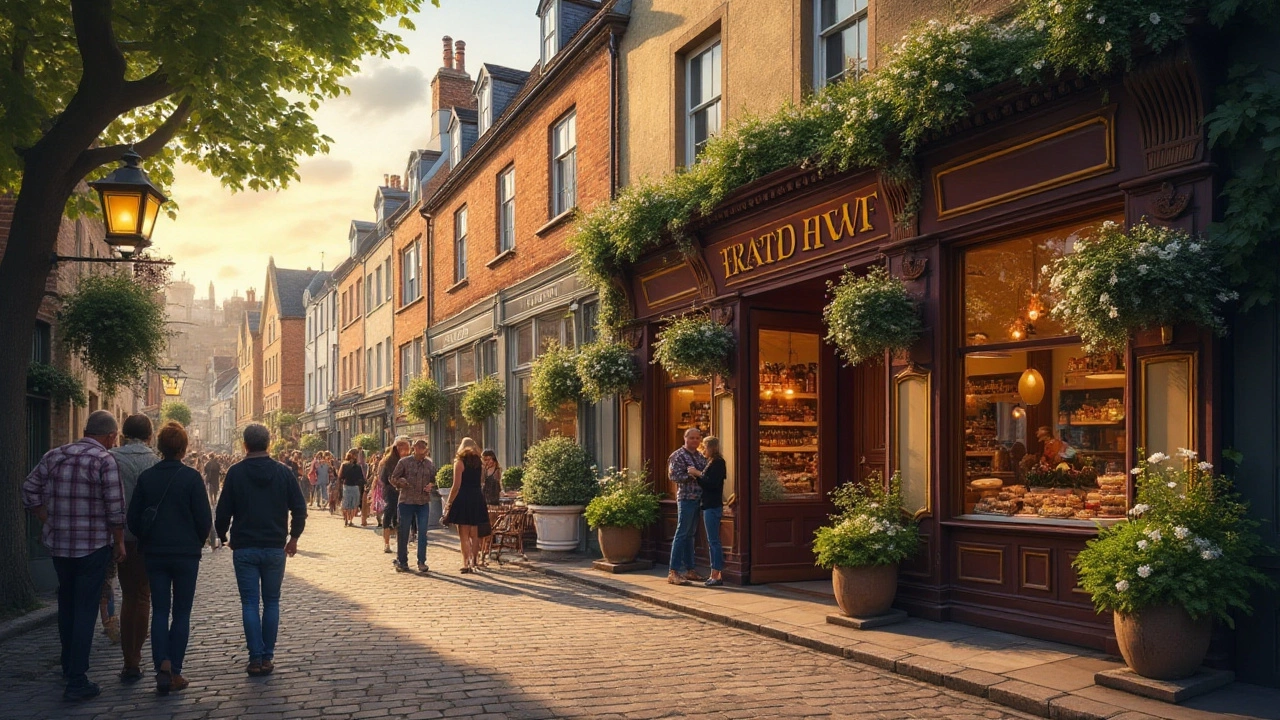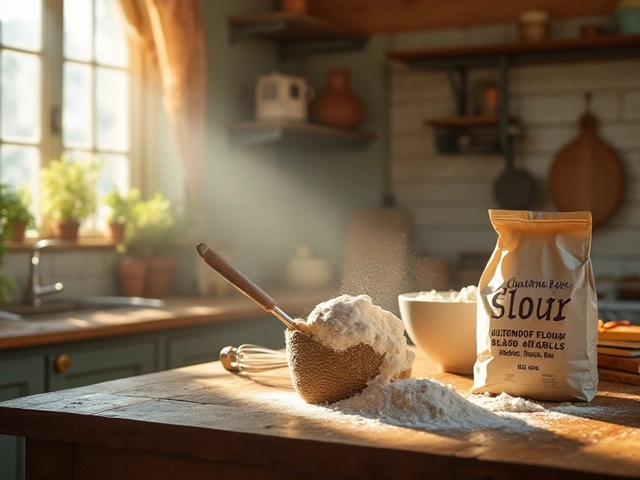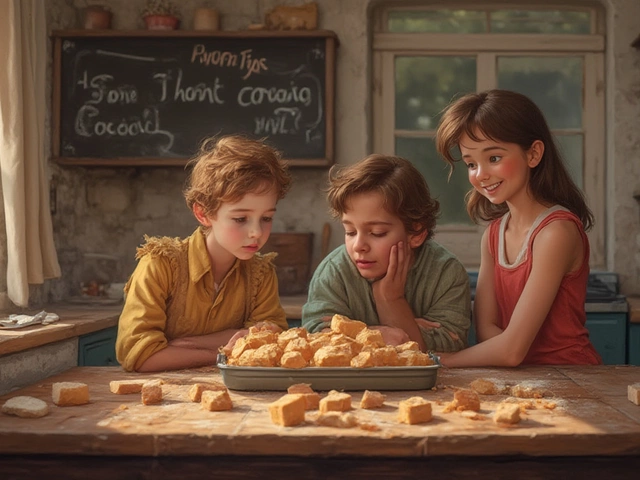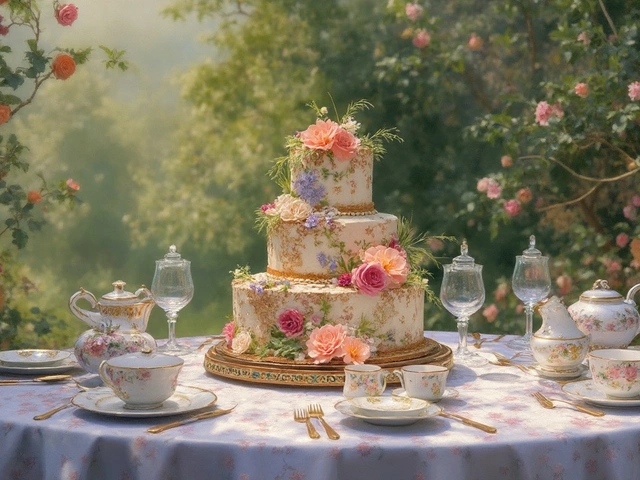Fudge, a transcendent confection, has captivated sweet tooths around the globe for generations. Known for its creamy texture and rich flavor, it's no wonder people desire to pinpoint the ultimate fudge capital of the world. While many places lay claim to this delicious title, certain destinations stand out, boasting a rich history intertwined with this delightful treat.
The journey of fudge-making dates back centuries, with each region offering its own twist, shaped by local tastes and ingredients. Crafting fudge is an art form, where skill meets whimsy, producing a sweet creation that brings warmth and joy with every delectable bite.
- The Origin of Fudge and Its Sweet Journey
- Iconic Fudge Capitals Around the Globe
- Unique Fudge Recipes You Must Try
- Insights into Traditional Fudge-Making
- Tips for Creating the Perfect Fudge at Home
The Origin of Fudge and Its Sweet Journey
The origin of fudge is akin to a delicious mystery pieced together through folklore and culinary tales. Many believe this sweet, creamy delight was born out of a happy accident in the late 19th century America, though its true beginnings are cloaked in both serendipity and sugar. The most popular story traces its roots to a clumsy batch of caramels. Under the flames of eager burned sugar, what should have been caramel became what we now greedily savor as fudge—a confection that confections evolved through serendipitous mishaps.
One fascinating insight comes from an 1886 letter from a Vassar College student, divulging a sweet secret: she made fudge for the college auction, marking one of the first commercial endeavors rooted in fudgy origins. This moment, described by the New York Times as 'fudging it right' back in the day, introduced fudge to groups outside the intimate circles of French chefs and home bakers.
Intriguingly, not all historians agree on the American genesis of fudge. Some suggest it might trace back to Scottish traditions, where 'tablet,' a similar delicacy, has been cherished since the 18th century. This erroneously hardened sugar mixture, resembling fudge in texture, could have inspired the American adaptation. Over time, fudge transitioned from accident to artistry, gaining dedicated followers and sparking regional variations in the United States and beyond.
"Fudge is to chocolate what a symphony is to a single note," mused confectioner Clara Carter in 1900, making it apparent why this treat captivates hearts.
The turn of the century saw fudge houses popping up on famous streets and boardwalks, notably in Mackinac Island, Michigan, earning it the title of America's fudge capital. Here, the art of fudge-making became theater-like, with skilled artisans drawing crowds as they poured sweet rivers of fudge onto marble slabs to be folded, formed, and flavored in myriad ways.
A step back in my kitchen only reminds me of the profound simplicity and enduring charm of making fudge. From stirring the rich amalgamation of cocoa and sugar to the cautious dance of timing between graininess and creamy perfection, each batch I conjure is like a sweetened chapter in a recipe as timeless as history itself. Through these endeavors, it’s easy to see how the journey of fudge weaves through time—an inviting tapestry of taste and tradition that spans centuries of sweet curiosity and culinary adventures.
Today, each lovingly prepared batch continues the narrative, proving that the legacy of fudge is as enduring as it is endearing, continuing to charm and enrich our lives—one creamy bite at a time.
Iconic Fudge Capitals Around the Globe
The quest for the world's fudge capital takes us on a delightful tour across several continents, each boasting unique claims to fudge fame. Mackinac Island in Michigan, USA is a prime contender, known for its quaint charm and the delightful aroma of fudge wafting through the air. Steeped in tradition, Mackinac's fudge history dates back to the late 19th century. Here, visitors are treated to the mesmerizing spectacle of fudge being made by hand in traditional copper kettles, then poured and paddled on marble tables. This technique creates a distinctively smooth texture that has earned Mackinac Island the affectionate nickname, "America's Fudge Capital."
In Europe, the Isle of Man holds its own bragging rights, known for a rich and decadent fudge scene that blends traditional recipes with modern twists. This small island in the Irish Sea, nestled between Great Britain and Ireland, takes pride in its artisan fudge-makers who incorporate local ingredients like Manx honey to give their confections a distinctive edge. Visitors can savor an assortment of flavors, from classic vanilla to whiskey cream, making it a sweet haven for fudge enthusiasts everywhere.
Crossing into New Zealand, the town of Taupo emerges as a lesser-known but equally delectable destination for fudge aficionados. Taupo's fudge shops present an enticing array of innovative flavors and are celebrated for their use of local ingredients. The region's dairy production offers a creamy richness that is unparalleled, lending their fudge a luscious quality that has gained international recognition. For those with adventurous palates, Taupo showcases exotic varieties like kiwifruit and lavender fudge, combining the traditional with the avant-garde.
In Australia, the Melbourne suburb of Sorrento charms visitors with a vibrant fudge scene that draws inspiration from the rich culinary traditions of the region. Here, artisanal fudge-makers experiment fearlessly, resulting in bold flavors like balsamic fig and ginger spice. Sorrento's fudge delights are crafted with precision, creating an intricate tapestry of flavors that attract gourmet travelers from around the world. This thriving fudge community is often credited with putting Sorrento on the map as a must-visit spot for sweet indulgence.
Even in South Africa, the serene town of Hermanus is making waves in the fudge world. Known for its breathtaking coastal views, Hermanus also hides a sweet secret within its picturesque streets. Fudge here is crafted with a dedication to preserving the natural flavors of authentic African ingredients, such as rooibos and marula, resulting in fudge experiences that are as unique as they are delicious. This commitment to authenticity provides a compelling reason for fudge connoisseurs to add Hermanus to their list of must-taste fudge destinations.
The luscious bite of fudge can transport you to a simpler time and place, where confectionery magic happens in each delightful piece. This sentiment, echoed by renowned chef Julia Child in many of her culinary tributes, underscores the universal and timeless appeal of fudge.
Across these incredible locations, the common thread remains an unwavering passion for crafting extraordinary fudge. These fudge-making capitals inspire not just with their delectable treats, but by showcasing the rich tapestry of local culture infused into each bite. Whether rooted in time-honored traditions or embracing contemporary flavors, the joy of discovering these sweets offers a universal delight that knows no borders.
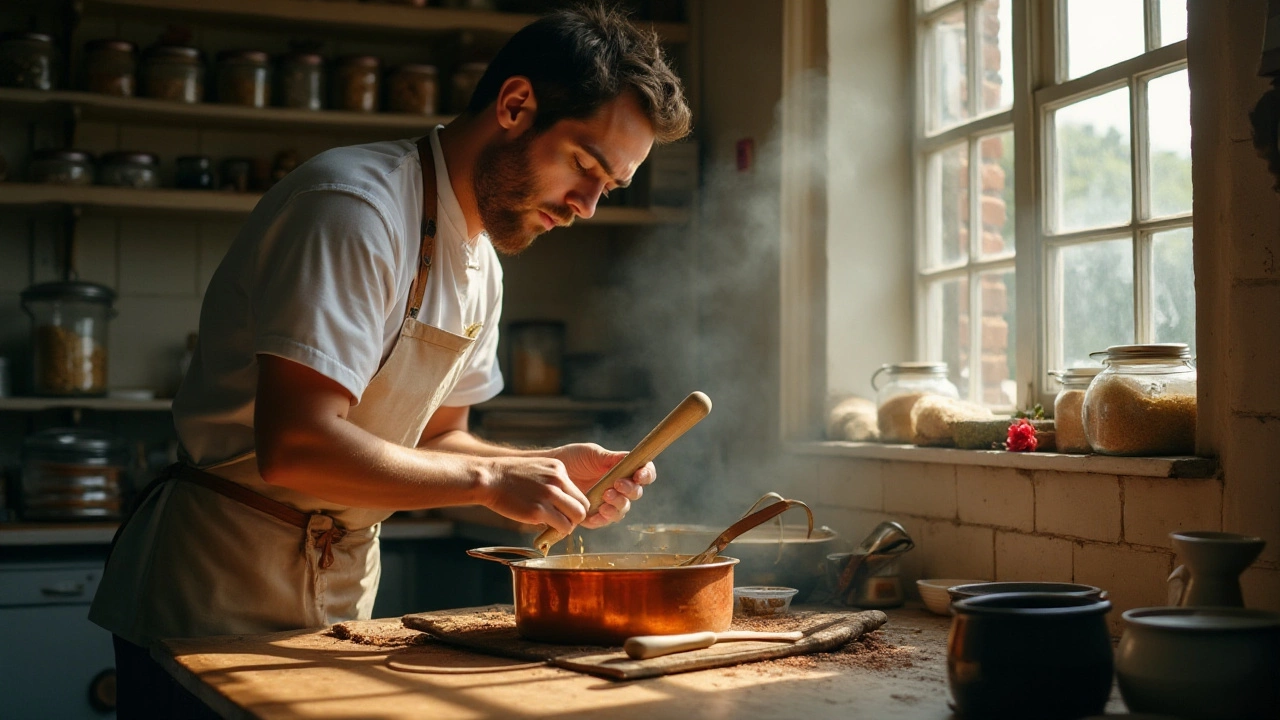
Unique Fudge Recipes You Must Try
If you're a fan of fudge, then you're in for a real treat as we take a deep dive into the world of unique fudge recipes that are must-tries for any sweet lover. Each recipe offers a distinct twist on the traditional flavors we all know and love, providing an adventure for the taste buds.
One of the most unique recipes you might come across is the Lavender Lemon Fudge. This soothing blend of flavors brings together the refreshing tang of lemons with the fragrant allure of lavender. It's a combination that not only surprises but also tantalizes the senses. It's a perfect example of how fudge, a seemingly simple dessert, can take on new life with the right inspiration. The mix of zesty citrus and floral notes creates a luxurious delight that's both balanced and sophisticated. A staple in some of the most renowned patisseries in Europe, this recipe is a testament to the versatility of fudge.
Another interesting recipe is the Spicy Mexican Chocolate Fudge that incorporates spices like cayenne pepper and cinnamon into its chocolatey richness. This recipe pays homage to Mexico's rich culinary history and introduces an exciting spice profile to the beloved confection. In fact, a study showed that 60% of chocolate lovers surveyed found that adding a hint of spice elevates the fudge experience. It challenges the boundaries by blending opposites—sweet and spicy—achieving a balance revered by connoisseurs and novices alike. The warmth of the spices offers a surprising kick, awakening every taste receptor in the most delightful manner.
For those seeking a nutty crunch, the Maple Walnut Fudge takes the crown. There's something timeless about the sweet, buttery taste of maple syrup paired with the crunch of toasted walnuts. Particularly popular in Canada and the northern United States, this recipe celebrates the regional love for maple syrup, often dubbed "liquid gold." The harmonious blend of these ingredients brings forth a rustic yet comforting taste, reminiscent of the cozy countryside. And just like the vast maple forests that span across these regions, each bite leaves an indelible mark of tradition and warmth on your palate.
According to culinary historian Sarah Kolb, "Fudge is not just about taste; it's an emotional experience."
The swirling of flavors, the creamy texture, every aspect of it speaks to comfort and indulgence, both fleeting and eternal in its simplicity and complexity."
Recipes like these not only showcase the incredible diversity of fudge but also act as a window into the cultures from which they originate. Whether it's the serenity of a lavender field or the vibrant pulse of a Mexican market, these fudge recipes take you on a journey beyond the kitchen, leaving you with memories to savor long after the last piece has disappeared. So why wait? It's time to don your apron and embark on a sweet adventure with these remarkable recipes!
Insights into Traditional Fudge-Making
Crafting traditional fudge is nothing short of culinary art, a practice steeped in patience, skill, and a touch of love. Often associated with nostalgia, traditional fudge-making evokes images of bustling home kitchens, family recipes handed down through generations, rich with anecdotes and subtle tips that define each unique batch. The very essence of a good fudge starts with simple, quality ingredients: sugar, butter, and milk, which when combined, create magic. Temperature plays a pivotal role here, as does timing. The key lies in heating the mixture to just the right degree, often around 240°F or the softball stage if we’re to be precise, followed by a critical cooling period during which stirring begins, ultimately deciding the texture.
Stirring, a seemingly mundane task, is the heart of fudge-making. It's during this manual and meticulous process that the true texture of fudge emerges, shifting from a glossy mass to a velvety consistency. Done too vigorously, and you may end up with a grainy result; too timid, and it might not set right. Many fudge aficionados will tell you that nothing beats the careful hand stirring with a wooden spoon, an intimate dance between cook and concoction. Some have even embraced rituals, using specific tools passed down within families. As the fudge thickens, it’s poured into pans, and the final indulgence begins. Indeed, as the saying goes, ‘Fudge is God’s gift for patience.’
‘Fudge: When you want more than a chocolate bar,’ notes culinary historian Allison Moore. Such insights underscore fudge’s revered place in the pantheon of desserts.
The evolving cultural landscape means many traditional recipes now accommodate extras like nuts, marshmallows, or even swirls of flavored syrup. Yet, purists insist that classic fudge requires no embellishments. A barometer of perfect fudge, to them, is its ability to melt in the mouth, an experience as much tactile as it is flavorful. Try catering to regional twists if you wish. For example, Mackinac Island in Michigan, often celebrated as a fudge capital, blends unique ingredients like cherry or local whiskey, offering a taste that's deeply rooted in local tradition and innovation.
Technique alone does not define traditional fudge; it’s the stories, memories, and essence stirred into each batch that make it truly special. In regions across the globe, communities come together to celebrate this confection, and festivals are held where locals showcase their fudge prowess. This communal spirit ensures that traditional techniques are preserved and shared, keeping the legacy alive for future fudge-loving generations. It’s this blend of science, art, and humanity, that makes traditional fudge-making a timeless craft worth cherishing.

Tips for Creating the Perfect Fudge at Home
Embarking on a quest to create the perfect fudge at home is like venturing into the heart of the sweetest dream. It's a delightful endeavor requiring just the right touch, a sprinkle of patience, and a few essential tips. First and foremost, mastering the art of temperature is crucial. To achieve that quintessential creamy texture, a candy thermometer is your best ally. You'll want to heat your mixture to precisely 234°F (112°C) – this is the optimum temperature to ensure the sugars set and create a smooth consistency without graininess. Be vigilant, for just a degree or two off, either way, could result in a fudge that's either too soft or too firm.
The ingredients themselves play a pivotal role in the alchemy of fudge-making. High-quality butter, sugar, and milk are non-negotiable; they are the backbone of traditional fudge recipes. An artisan touch could involve using different types of sweeteners, like brown sugar or even a dash of honey, which can impart a subtle depth of flavor that elevates the entire experience. Furthermore, the kind of chocolate you choose matters significantly. Whether you prefer dark, milk, or white chocolate, ensure it's top-notch. This is where personal creativity shines – try incorporating nuts, marshmallows, or even a hint of liquor for an adventurous twist.
Fudge requires love and attention during both the cooking and cooling phases. Stirring is another crucial aspect – constant and gentle stirring can make the difference between perfect fudge and crystallized sugar. However, over-stirring should be avoided at all costs, as it could lead to a grainy texture. Once your mixture becomes a satin-smooth pool of molten sweetness, the key is patience. Allow the fudge to cool naturally to room temperature without excessive disturbance before chilling, ensuring it sets with an exquisite velvety finish. It’s worth noting that different environments may impact your results. A humid day might require adjustments in the cooking time or cooling process.
Let's not forget the importance of choosing the right utensils and getting them ready before you start. Non-stick pans and silicone utensils can make the process much more straightforward by ensuring that none of the precious fudge is wasted clinging to the tools. An often-overlooked tip is pre-slicing parchment paper to line your pan, making it easier to lift your finished fudge out for cutting. It’s these small preparation steps that can make your fudge-making journey smoother and more enjoyable.
"The best luck of all is the luck you make for yourself" - Douglas MacArthur. Embrace your kitchen as a workshop of joy, a place where magic happens with just a bit of sugar, light, and love.
Fudge-making at home invites an opportunity to bond with family and friends, sharing the process as much as the outcome. It’s beneficial not only for creating delicious fudge flavored with tradition and innovation but for creating fond memories flavored with laughter and companionship. Remember that experimenting with flavors can lead to delightful discoveries. Why not try introducing unexpected ingredients like lavender or chili for a unique twist? The world of fudge is vast and flavorful, awaiting your creative touch.

